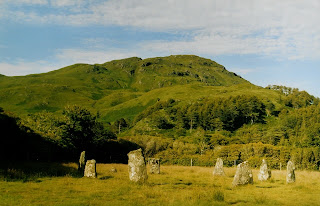"And then we were there. The Zocalo. Otherwise known as The Plaza de la Constitution, it is one of the world's largest squares. A huge open area, surrounded by majestic and magnificent looking old buildings. Many of these buildings were rich shades of yellows and orange, warming the drab grey of the paving stones beneath our feet. Bright red awnings sat over many windows, the contrast startling. A large and busy road circumnavigated part of the square, rather ruining what could be a very peaceful scene. The hard, stoniness was only broken by the strange, perfectly manicured, mushroom shaped trees at various intervals, edging around the square."
The Zócalo is the main plaza or square in the heart of the historic center of Mexico City. It used to be known simply as the "Main Square" or "Arms Square," and today its formal name is Plaza de la Constitución (Constitution Square). However, it is almost always called the Zócalo today. Many other Mexican towns and cities, have adopted the word zócalo to refer to their main plazas, but not all.
It has been a gathering place for Mexicans since Aztec times, having been the site of Mexica ceremonies, the swearing in of viceroys, royal proclamations, military parades, Independence ceremonies and modern religious events such as the festivals of Holy Week and Corpus Christi.
The modern Zócalo in Mexico City is 57,600 metres² (240 m × 240 m), making it one of the largest city squares in the world. It is bordered by the Cathedral to the north, the National Palace to the east, the Federal District buildings to the south and the Old Portal de Mercaderes to the west, the Nacional Monte de Piedad building at the north-west corner, with the Templo Mayor site to the northeast, just outside of view. In the center is a flagpole with an enormous Mexican flag ceremoniously raised and lowered each day and carried into the National Palace. There is an entrance to the Metro station "Zócalo" located at the northeast corner of the square but no sign above ground indicates its presence.

















